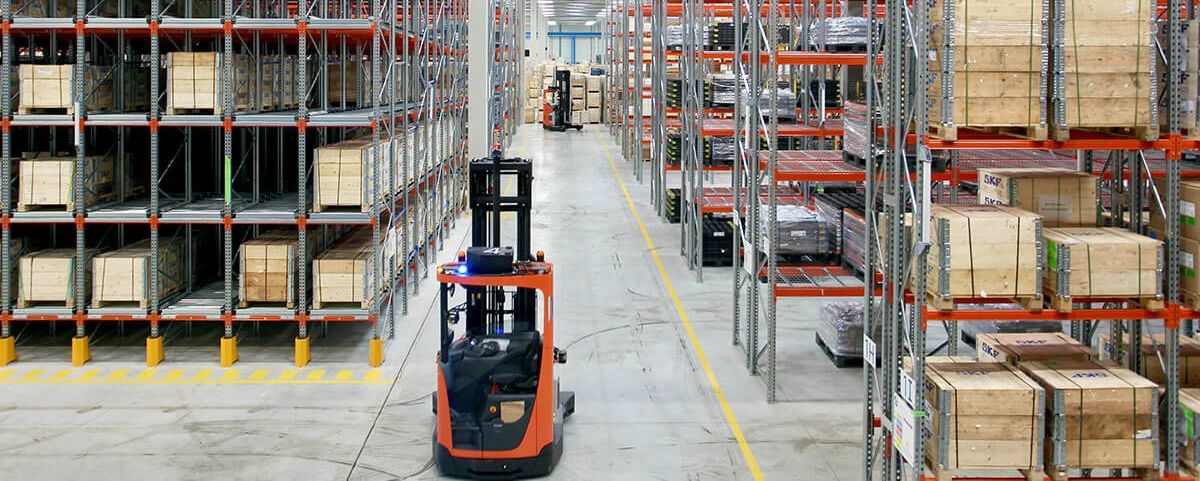Blog
The first mile in the manufacturing supply chain

As the final step in the supply chain, the Last Mile has always been a focus of improvement: “How do we cut costs? How do we get goods to the customer faster than on-time?” New processes, urban sprawl, and modern technologies have been integrated into the Last Mile to account for changing customer demands - Frost & Sullivan’s Future of Logistics Report predicts that autonomous mobile robots will make long-haul transportation fully autonomous and generate savings of 40% per km in the near future. But what if these methodologies were applied to indoor logistics? The Last Mile, although paramount to the customer, is only half of the equation.
Shifting focus from the last mile in the supply chain
The entry and flow of goods through a facility are often neglected or overlooked, yet they resemble challenges experienced in the Last Mile of the supply chain. If manufacturers eradicated conventional thinking of how to get inventory to the line faster, cheaper and more effectively, significant impacts - the bottom line in particular - would be recognized and reflected throughout the supply chain process. With this line of thinking, similar challenges, advancements and impacts can be drawn and applied from the Last Mile to operations inside industrial centers to generate improved productivity. This phenomenon starts at the top of the supply chain, in what is called the First Mile.
What is the first mile in manufacturing?
The First Mile of the supply chain is the flow of materials within the facility supply chain to create a finished good before it is delivered to the next destination in the supply chain. It is a set of fulfillment processes founded on material transport that reflect ideologies within the Last Mile. When executed with lean best practices, focus on the First Mile ensures that the transport and assembly of materials occur in an optimal fashion. This allows manufacturers to have full visibility of what’s coming in the front door to satisfy requirements for what’s going out the back door.
The last mile vs the first mile
With the supply chain encompassing both the First Mile and the Last Mile, parallels can be drawn between the two. Barclay’s Last Mile Report states that “The movement of goods between a transport hub to a delivery address, commonly known as The Last Mile, is becoming increasingly competitive and innovative. Strong relationships between retailers and logistics providers have never been more important in ensuring positive experiences for end consumers.”
It is not far reaching to apply this same thinking to the First Mile as it, too, is becoming increasingly competitive and innovative, and relationships between suppliers and outgoing distribution centers have never been more important due to evolving customer demands and an always-growing competitive landscape.
Much like the Last Mile, the First Mile entails the following:
- Materials need to move quickly, accurately and cost-effectively from a point of origin to a point of destination
- Providers are deeply concerned with on time, efficient delivery at a competitive price.
- Emerging technologies have been designed to optimize applications in supply chain ranging from inventory warehouses to goods delivery. Within the First Mile, emerging technologies such as 3D printing, wearables and autonomous mobile robots are expanding into the space to accommodate lean manufacturing approaches and integrate into the vision of Industry 4.0.
Impacts of optimizing the first mile in manufacturing
By optimizing, and in turn automating the First Mile, manufacturers have the potential to improve overall production processes and address challenges related to providing shorter lead times and manufacturing custom products. Therefore, the First Mile can enable operators to turn their cost center into a growth center. Not to mention, lean performance introduced through the First Mile enables sequential loading of materials onto trucks for efficient delivery time in the Last Mile.
The First Mile presents opportunity for manufacturers to rethink intralogistics and how they can improve the velocity at which new products get to market, the speed at which they’re produced, and how operations can experience improved efficiency. Other benefits of successful optimization of the First Mile include:
- Redeploy the human workforce into high-value positions with complex tasks
- Eliminate pressures of labor shortage or high turnover
- Connect islands of automation to yield higher throughput and accuracy
- Decrease operating density
- Generate operational savings
- Create opportunity to bring manufacturing closer to the customers
Offer competitively priced products by selling at a lower cost.







